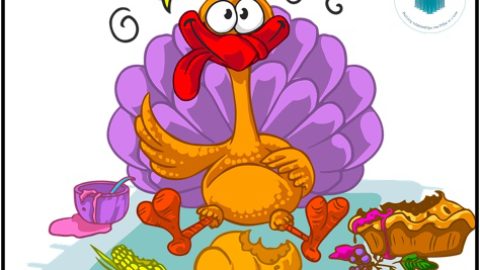Do you feel like you are always arguing with or reminding your kids to handle their chores, keep their rooms organized, finish their homework, clean up after themselves, put their dirty laundry in the hamper, and on and on and on?
Point sheets are the answer for your family! You can say goodbye to the daily reminders and nagging. You can stop the arguments that keep repeating because your kids are not doing what you ask. The descriptions below will tell you exactly what it takes to create and implement this powerful tool in the most effective way.
POINT SHEETS 101
Read carefully to understand why point sheets are so helpful and then read on to learn how to create them. There are four basic reasons for the successfulness of a point sheet.
Reason #1: Organization
Point sheets help parents organize their thinking and select the most important behaviors they expect to see their children demonstrate.
Reason #2: Remains Focused on the Positive
Point sheets focus on positive parenting and positive behavior because the only items listed on the point sheet are the behaviors a parent would like to see their child(ren) perform. This creates opportunities for positive interactions between parents and children in areas that used to cause stress and arguments.
Reason #3: Matches Developmental Levels
Point sheets are designed in a way to meet children at their developmental level because they are based on the “WITFM” rule (“What’s In It For Me?”). By specifically explaining the benefits to the child and allowing the child to earn a reward, point sheets encourage a child to do what is asked.
(SIDE NOTE: Does this simply sound like a bribe? If it does, I encourage you to learn the difference between a bribe and a reward by reading my guest blog at Mybaba titled “What is The Difference Between Bribes v Rewards for Good Behaviour?”)
Reason #4: Empowers the Child
There are several ways in which point sheets help to empower children to take control over their own lives.
A parent may remind a child that he can earn rewards by completing his point sheet, but a child is never required to complete a point sheet. Do not make the point sheet a potential new area for a power struggle. Instead, remind the child that in order to earn those awesome rewards, he must complete the point sheet. If necessary, redesign the point sheet to include more attractive rewards that the child finds irresistible.
Additionally, the child is offered choices to decide for himself which items he completes on the point sheet. Again, remind the child that the more items he completes the more rewards he earns.
If the rewards include money, then the child is given even further choices. If money is a reward, be sure not to make your child wait unnecessarily long periods before you head to the dollar store (or wherever small items can be purchased). This timely follow through is part of the reward process.
THE CARDINAL RULES OF POINT SHEETS
RULE #1: Rewards must be desirable. It is important that the rewards your child earns for each item successfully completed on the point sheet earns him a reward he actually wants. If you offer him unappealing rewards there is no motivation for him to complete the tasks.
RULE #2: Rewards are exclusive. It is important that the rewards for doing the point sheet are available to him ONLY for completing items on the point sheet. If he loves gum and can have gum any time he wants then there is no motivation to earn gum as a reward from the point sheet. If you decide that pieces of gum are one of the rewards, then the only way he can get gum is by successfully completing items on the point sheet.
CREATING A POINTSHEET
Step 1. Make a List of Behaviors
Make a list of your child’s behaviors that are unacceptable to you. Begin “small” by choosing five behaviors you would like to see the child change. For example, “Leaves his toys all over the living room.” For each of the behaviors that you would like your child to change, think of the replacement behavior you would like your child to say or do instead.
Be sure that you list only specific behaviors that you would like to see your child perform. Don’t fall into the trap of saying something like, “I want my child to clean up his room.” Be more specific. Words like “clean up” are often defined differently by different people.
Ask yourself the question, “What do I want Johnny to do in his room so that I can see that he cleaned it?” Perhaps you might say:
- “Johnny will put the building blocks and the toy cars in their storage boxes before bedtime.”
- “Johnny will hang his shirts on hangers in the closet and put his clean sox and underwear in the drawer.”
- “Johnny will put all of the Legos in their storage boxes and put the matchbox cars in the toy garage.”
Other sample goals stated properly might sound like:
- “Susie will brush her teeth every morning and at bedtime without reminders.”
- “When Bobby is asked when he will start working on his homework, he will tell me the start time and when that time arrives, he will shut off the TV and electronics and complete his homework.”
- “Susie will clear her dishes from the table to the sink when she done eating.”
Step 2. Review the Replacement Behaviors
Look closely at each of the behaviors to be listed on the point sheet and be sure that they are behaviors you want your child to do and NOT behaviors you want him to stop doing. Always focus on the REPLACEMENT behaviors, not the undesirable behaviors.
Be sure to review the listed behaviors with the child in the morning or the night before so he knows which behavior will earn him rewards on a given day. Remember that it takes time to develop new behavior patterns so even when the child successfully repeats chosen behaviors keep them on the point sheet for perhaps a month or two… or longer if you see that the behavior has not developed a pattern of consistency.
Step 3. Determine Rewards
Now that you have five replacement behaviors picked out, you will want to determine the rewards.
Be sure to decide in advance the rewards your child will receive at the end of the day for the items on the point sheet completed correctly.
Some parents choose the rewards themselves and some parents allow their children to make suggestions. That’s up to you. It is important for your child to know that the final decision is yours. It is also important for parents to realize that the more the child can be involved in decisions, the more he will be enticed to participate in the point sheet process. One way for parents to retain control is to give the child several choices and let him decide which of the choices will be listed as rewards for completing the items on the point sheet successfully.
Remember that each item on the point sheet completed correctly earns one reward. The child does not have to complete every item on the point sheet so if he only chooses a few select items to complete then consider that a great start. You may want to briefly remind him again that it is his choice but the more items he completes, the more rewards he earns.
Rewards can be money (coins—you decide which coins), a treat, or special time to play a game with you or… whatever you decide that the child will be glad to receive.
Again, consider involving the child in helping to develop a list of reward but keep control of that process by giving him choices that you decide and asking him which one should be his reward.
Step 4. Create Your First Point Sheet
Now that you have five behaviors and have determined the rewards, it’s time to create your first point sheet by listing the five behaviors you would like your child to do with one behavior on each line along with the reward received for completion.
Make sure the child understands the behaviors listed and the rewards he will receive for cooperation. From there, you may remind the child of the point sheets but it is ultimately his decision to complete items on the sheet.
At the end of the day, usually after dinnertime, take out the point sheet and sit down with your child to fill it out. If the child can complete it independently, then let him do that. Be sure to write a plus mark, check mark, or other symbol after each behavior he successfully performed that day.
Let your child know that both of you will keep track of his behavior choices during the day and he will complete the point sheet after dinner. He will get his rewards after you have filled out the point sheet together.
Step 5. Remain Focused on the Positive
As always, focus on the positive! Congratulate your child for each of the goals he achieves and encourage him by saying that tomorrow he can choose to increase his rewards by completing the other behaviors.
As a pattern of good behavior is achieved, you can add and remove behaviors to the list and change up the rewards offered to keep the child interested.
POINT SHEET POINTERS
Although the system is fairly simple and extremely effective, there are a few things to keep in mind when taking advantage of point sheets.
You Can’t Change Someone Else’s Behavior
Your child is the only person who can change his own behavior. Your goal is to provide the motivation for him to want to change his behavior.
Avoid Arguments
Don’t make the point sheets a tool for getting into arguments. Simply review the rules of the point sheet: he will get rewards for each one of the behavior goals listed on the point sheet that he completed. Before point sheets are used, be sure that the rewards are chosen and explained; this further reduces the likelihood of arguments about what the child receives. (Remember WIIFM, “What’s In It For Me?”)
Be Enthusiastic!
Be sure to introduce the point sheet to the child with some enthusiasm and a sense of excitement… ”I’ve got a great idea!”
Be sure to celebrate with your child when he succeeds and earns a reward for completing even one of the behaviors listed on the point sheet.
Be sure to let your child know that when he decides to get the other items on his point sheet completed he will earn even more. Remind him that each day is a new opportunity to succeed in achieving the items on his point sheet and earn more rewards.
Continue to Empower the Child
Let your child know that you will be adding more items to the point sheet every few days so that he will have even more chances to earn rewards.
When you add items to the point sheet, show him the list of behaviors you are thinking of adding to the point sheet and perhaps ask him to choose two of those behaviors to add.
Perhaps even ask your child if he has suggestions about behaviors that cause conflicts and new (replacement) behaviors that could be added to the point sheet.
You can clearly see that EVERYTHING about a point sheet is positive. There are no arguments about completing the point sheet, but there are attractive rewards for the child who chooses to do so.
WHAT POINT SHEETS ARE NOT…
A Daily Behavior Report Card
The term “report card” is often a negative term for children and incorrectly suggests that someone is “rating them,” which is incorrect here. The purpose of a point sheet is actually for the child to have an opportunity to choose to be successful every day by choosing to perform certain behaviors and to be rewarded for that choice.
NOTE: The idea of a child’s behavior being rated by an adult and his performance appearing on a “report card” adds unnecessary pressure and the possibility of failure. Remember that a point sheet is an opportunity for your child to successfully change identified behaviors and be rewarded for making that choice himself.
A Reward Chart for Children
The point sheet described in this article is much more than a reward chart for children because it empowers the child to participate in creating areas of the point sheet (if the parent chooses to include him), and if the parent allows, can even include the child’s input into deciding the rewards that are offered for achieving those behaviors.
Behavior Management Point Sheets
Although point sheets do result in behavior changes, they are not about “managing” a child’s behavior. Rather, they are about motivating the CHILD to choose to manage his own behavior and empowering the child by rewarding him for making that choice.
A Behavior Point System Chart
While rewards can be earned for behaviors that the child chooses to complete, a point sheet is more than a behavior point system chart. Point sheets are an empowerment tool that relies on involving the child in creating elements of the point sheet and celebrating his choices to be successful by giving him immediate access to pre-defined rewards.
TAKE ADVANTAGE OF POINT SHEET TEMPLATES
We provide detailed instructions and templates for worksheets aimed at all ages. These can easily be downloaded from the website, adjusted for your needs, and printed to make the process quicker and painless.
Find downloadable and printable instructions and templates on the Products page of the Pillars for Success website.
As your child repeatedly achieves success in targeted behaviors listed on the point sheet you can easily modify the sheet by adding new behaviors. Since a point sheet is available for the child to complete every day it will also be easy to print as many copies as you need.
GOOD LUCK
Good luck to you! Implementing a point sheet is a powerful tool to help reduce conflict and encourage cooperative behavior. Be sure to keep everything about it positive and empowering for your child. Offering choices gives the child a sense of control, but remember, too, that you are the one who is actually in full control by determining the choices available to him!
If you have questions or concerns about point sheets, replacement behaviors, or anything at all, please feel free to reach out to me, Sandra Kwesell, through the Contact page.













